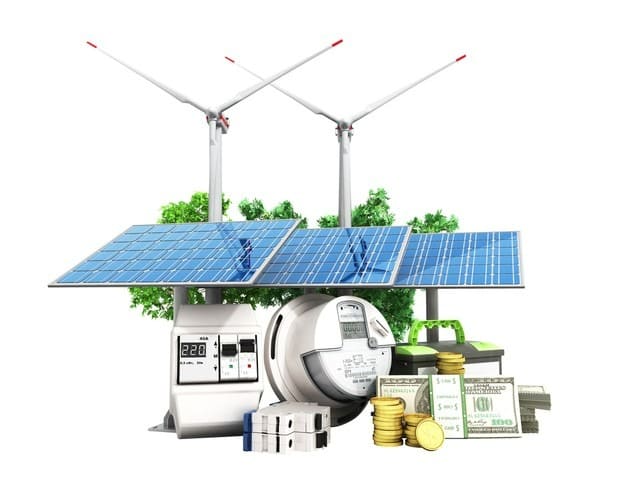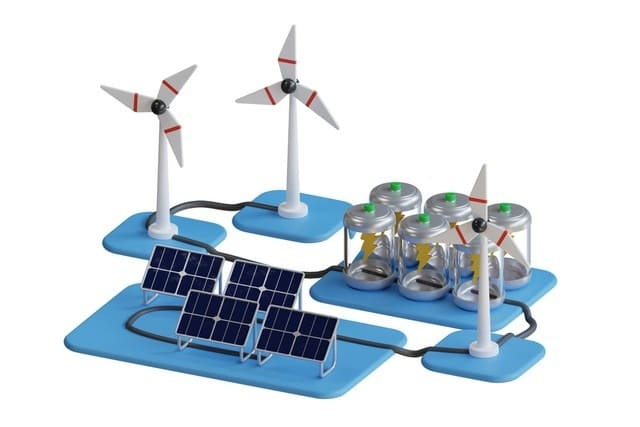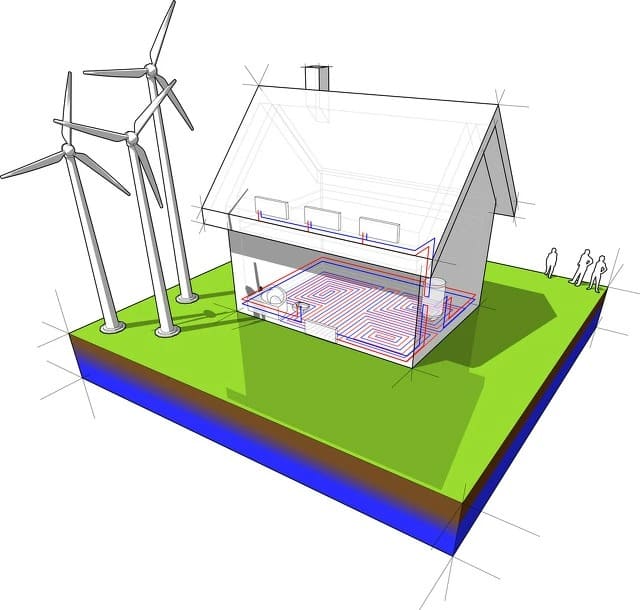As people’s pursuit of clean energy becomes increasingly strong, home wind turbines are gradually coming into the public eye. However, many people still have some questions about the working principle of wind turbines. One of the most common questions is: Can home wind turbines run without batteries?
This depends on your specific needs, wind resource conditions, and grid connection. This article will explore the operating principles of home wind turbines in depth, and analyze in detail the feasibility of running without batteries, to help you understand home wind turbines more comprehensively.

1. Working principle of home wind turbines
Home wind turbines are mainly composed of the following parts:
Wind wheel:
Converts wind energy into mechanical energy, consisting of blades, hubs, and nacelles.
Generator:
The mechanical energy of the wind wheel is converted into electrical energy through the use of a permanent magnet synchronous generator, known for its simple structure, high efficiency, and low noise level.
Controller:
The controller manages the operational aspects of the wind turbine, such as start-up, shutdown, power regulation, and more. Additionally, it can monitor operational parameters and conduct fault diagnosis to ensure smooth functioning.
Battery:
Used to store the electrical energy generated by the wind turbine to provide a stable power supply when the wind speed is unstable or there is no wind.
Inverter:
Converts the direct current generated by the wind turbine into alternating current, which is convenient for connecting to the home grid or power supply equipment.
2. Two modes of operation of household wind turbines
2.1 Grid-connected mode
Grid-connected mode refers to connecting the wind turbine to the home grid and running synchronously with the grid. In this mode, the power generated by the wind turbine is directly supplied to the home, and the excess power can be connected to the grid. Conversely, when the wind is insufficient, the home can obtain power from the grid.
2.2 Off-grid mode
In off-grid mode, the wind turbine is disconnected from the utility grid, and the power generated is stored in batteries. The stored energy is then supplied to the home directly from the batteries, providing a self-sustained power source.
3. Feasibility analysis of household wind turbines running without batteries
3.1 Advantages of grid-connected mode
Grid-connected mode is the most common operating mode of household wind turbines, which has the following advantages:
No battery required: Grid-connected mode does not require the use of batteries, which can save the purchase and maintenance costs of batteries.
Stable power supply: Grid-connected mode can run synchronously with the grid to ensure a stable supply of household electricity.
Cost saving: The grid-connected mode can connect excess electricity to the grid and obtain subsidies from the grid, which can reduce the household’s electricity costs.
3.2 Limitations of the grid-connected mode
The grid-connected mode also has some limitations:
Requires grid connection: The grid-connected mode requires the wind turbine to be connected to the household grid. If the household does not have a grid connection, the grid-connected mode cannot be used.
Need to meet grid requirements: The grid-connected mode needs to meet the requirements of the grid, such as voltage, frequency, phase, etc., otherwise it may affect the stable operation of the grid.
Limited by the grid: The power output of the grid-connected mode is limited by the grid. If the grid load is too high, the wind turbine may be limited to output power.
3.3 Advantages of the off-grid mode
The off-grid mode is suitable for households without grid connection. It has the following advantages:
Not restricted by the grid: The off-grid mode is not restricted by the grid and can be unaffected by the grid load.
Provide power guarantee: The off-grid mode can provide stable power guarantee. Even in the event of grid failure or power outage, the household can still get power supply.
3.4 Limitations of the off-grid mode
The off-grid mode also has some limitations:
Battery required: The off-grid mode requires the use of batteries to store electricity, and the purchase and maintenance costs of batteries are high.
Battery capacity limit: The capacity of the battery is limited and cannot meet long-term power needs.
Regular maintenance required: The battery requires regular maintenance, such as charging, discharging, and testing, to ensure the normal operation of the battery.

4. How to choose an operation mode that suits you
To choose an operation mode that suits you, you need to consider the following factors:
Wind resource conditions:
Grid-connected mode: If sufficient wind resources and stable wind speeds are available near your home, you can opt for grid connection, benefiting from the stability and potential subsidies offered by the grid. However, if your home lacks grid access or has poor grid access conditions, off-grid mode with a larger capacity battery becomes a viable option.
Power demand:
Large power demand and long-term supply: In such cases, opting for off-grid mode with a larger capacity battery is advisable. However, if your electricity demand is relatively small, primarily for lighting and household appliances, grid-connected mode is a suitable choice.
Budget:
The initial investment cost of the grid-connected mode is low, but the cost of grid access and grid subsidies need to be considered. The initial investment cost of the off-grid mode is high, and the purchase and maintenance costs of batteries need to be considered.
5. Solutions for household wind turbines to run without batteries
Although it is difficult to run household wind turbines without batteries, it is not completely impossible. The following solutions can help you achieve battery-free operation:
5.1 Hybrid system
The hybrid system refers to combining wind turbines with solar power generation systems to use solar power generation to supplement the lack of wind power generation. This solution can make up for the intermittent nature of wind power generation and improve the stability of the system.
5.2 Smart grid technology
Smart grid technology can manage wind turbines and power grids intelligently to achieve real-time regulation and control of wind power generation. For example, the power generated by wind turbines can be stored in the power grid through smart grid technology and released when needed.
5.3 Microgrid technology
Microgrid technology refers to the integration of wind turbines with other energy sources, such as solar power generation, energy storage batteries, gas generators, etc., to form an independent power system. Microgrid technology can improve the reliability and stability of the system and provide more flexible power management solutions.
6. Future development of household wind turbines
The technology of household wind turbines is constantly developing, and more advanced solutions will appear in the future, such as:
More efficient wind turbine design: More efficient wind turbine design will appear in the future, which can improve the efficiency of wind power generation and reduce costs.
Smarter controllers:
Enhanced controllers: In the future, smarter controllers will emerge, enabling more efficient management of wind turbine operations and enhancing system stability.
Advanced energy storage: The future will witness the emergence of more advanced energy storage technologies, such as hydrogen energy and liquid flow batteries. These innovations will offer safer and more economical solutions for energy storage.
7. Conclusion: Choose the solution that suits you and embrace clean energy
Whether household wind turbines can run without batteries depends on your specific needs and conditions. The grid-connected mode is currently the most common operating mode, but the off-grid mode can also provide stable power guarantee. With the continuous development of technology, more and more advanced solutions will appear in the future to help you use wind power more conveniently and enjoy the wonderful life brought by clean energy.
Leran More:Building a wind turbine for rural home – ScienceDirect

